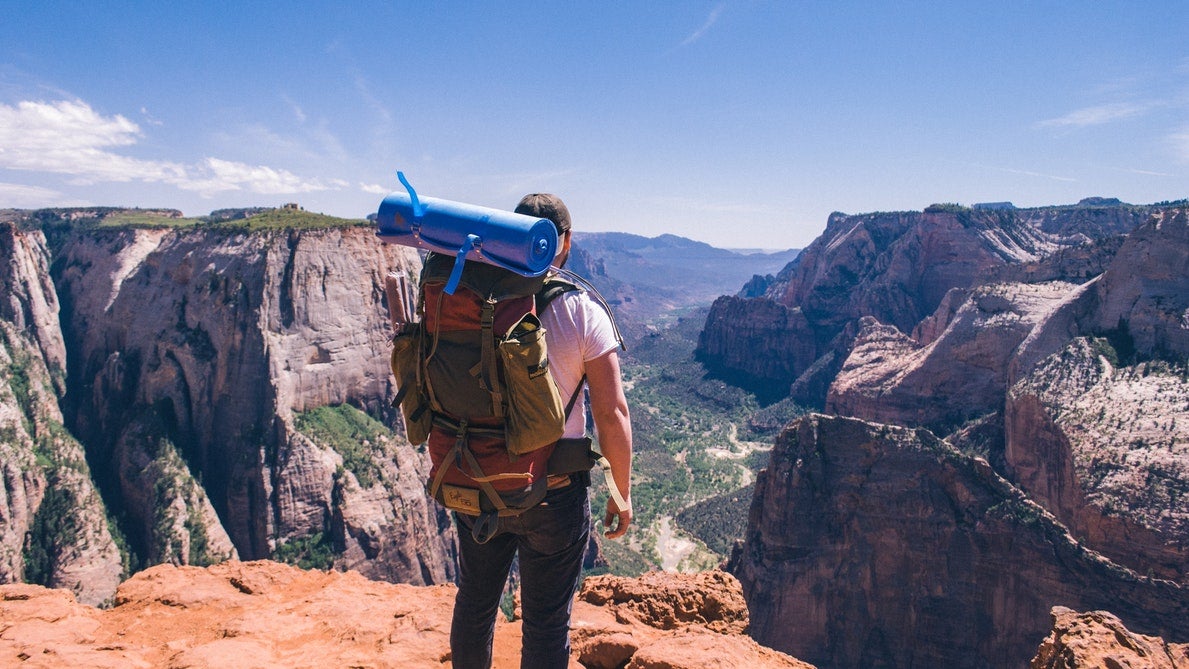This article of hiking tips is brought to you by our friends at OOFOS, the makers of recovery sandals designed to reward your feet for crossing finish lines and reaching summits. They know how tough it can be to power through long runs and push yourself to train for summer hikes.
Warm, gorgeous weather has a terrible tendency to slide by way too fast. And shoulder seasons can be rough on outdoor fitness plans. Then suddenly, summer is here and you find yourself wondering if you have the fitness, and the time, to pack in all the trails you’ve been looking forward to.
If your feet are itching for a challenge, it’s not too late to get into trail condition.
Hiking Tips For Bucket List Adventures
You need a workout regimen that will prepare you for dealing with uneven terrain, elevation increases, and long mileage, as well as high-intensity cardio and carrying more than your body weight. These hiking tips will help you get started:
Tip: Gym Exercises For Hikers
First off, let’s look at your daily workout. If you’re a gym rat, you might want to tweak your circuits to focus on exercises that better mimic the sort of stresses you’ll face on the trail.
It’s fine to want your guns ready for summer, but toned arms won’t help you nearly as much as an amped core and strong legs. Now is the time to work on your back muscles so that you can better handle a heavy pack, and on your abs so they can help protect your posture. Squats will also be a huge help for powering up hills and getting back up off the ground with your pack on your back.
Deadlifts, calf raises, lunges, and isometric exercises can all condition your lower body. Step aerobics is also a great option, as is replacing your treadmill or stationary bike routine with a stair master or elliptical. A whole-body workout that focuses on maintaining intensity over a set time, like barre for example, can also help as part of the mix.
Remember, these hiking tips won’t be too helpful if you forget to stretch and practice balance techniques through activities like yoga or pilates. Your ability to stay stable even on rough terrain can keep you safe and prevent undue wear and tear on your joints.
Tip: Trail Prep Cardio
Running is a great way to get in your cardio, but unless you’re trail running or have elevation gains and losses built into your road route, it’s not necessarily the best way to get ready for big hikes. If running is really your jam, focus on endurance over speed and building up longer mileages.
Trail running is great because it forces you to work with similar terrain you’ll encounter while hiking, and to focus on the minute adjustments your body must make to stay stable and moving forward.
Biking, too, is a great way to strengthen your legs while getting your body used to cardio output over time. Test yourself against hilly routes and progressively longer excursions. You might be surprised at how far you can go—in fact the only downside might be how slow hiking will seem after you conquer some single track.
Tip: Day Hikes
Naturally, the best way to prep for hiking is to hike. It’s just not sensible to start with a multi-day backpacking trip, however, or even a strenuous but shorter trail. Start slow—you don’t have to summit a 14’er your first time out. You can stretch your legs, get used to the fresh air, and enjoy sites that are at their peak or might be inaccessible for a few months out of the year due to snow or ice. If that feels good, or even too easy, you’ll have a better sense of what challenges you can tackle next.
What kind of training schedule you set as your start your spring hikes depends entirely on your schedule, level of fitness, and how difficult your goals are. If you simply want to be more active and tackle some weekend trips like, say, Cloudland Canyon State Park in Tennessee, Possum Kingdom State Park near Dallas, or Stone Mountain State Park near Atlanta, that’s much different from, say, trying to bag the Grand Traverse in the Tetons, scrambling up Half Dome, or trekking Kilimanjaro. Tailor your training to you goals, and don’t forget that you can use one goal as a stepping stone to another. Maybe you aren’t ready to summit Mt. St. Helens, but you can start by using these hiking tips to train for Dog Mountain.
As you increase the difficulty of your excursions, also increase the weight in your pack. Day hikes are the perfect time to play around with how you pack the backpack you’d bring on longer forays. Even if you’re just doing a few miles out and back, practice carrying all the gear you would need for a few days. It’ll be good to have some trial runs on what you bring and how you fit all your hiking gear together. It’ll also be good to get used to the way a pack affects your center of gravity, your gait, and your will to carry on–especially uphill, in the heat!
Tip: Treat Your Feet
Those same hiking tips go for experimenting with your footwear. A day hike is an opportunity to test drive your prefer hiking boots, trail shoes, or sneakers. You wouldn’t want to end up miles in to a backpacking trip on the Pacific Crest Trail only to find that your boots are too small, as Cheryl Strayed famously did in Wild.
Be kind to your feet — even more so if you’re breaking in a new pair of boots or hiking on especially rocky terrain. Especially if you have a condition like plantar fasciitis, high arches, or other foot conditions, you might want to look into sport sandals with arch support like Oofos for recovery after tough runs or hikes. If the rest of you is very sore when you get home, take a hot Epsom salt bath, ice whatever is tender, pop an anti-inflammatory, and start researching your next workout trail.
By emphasizing endurance, balance, stability, and lower body strength, you will be giving yourself the building blocks you need for amazing summer outings. Be patient and consistent and you’ll soon find yourself going higher and further than ever before.
The Dyrt is the only camping app with all of the public and private campgrounds, RV parks, and free camping locations in the United States. Download now for iOS and Android.Popular Articles:
Articles on The Dyrt Magazine may contain links to affiliate websites. The Dyrt receives an affiliate commission for any purchases made by using such links at no additional cost to you the consumer.



